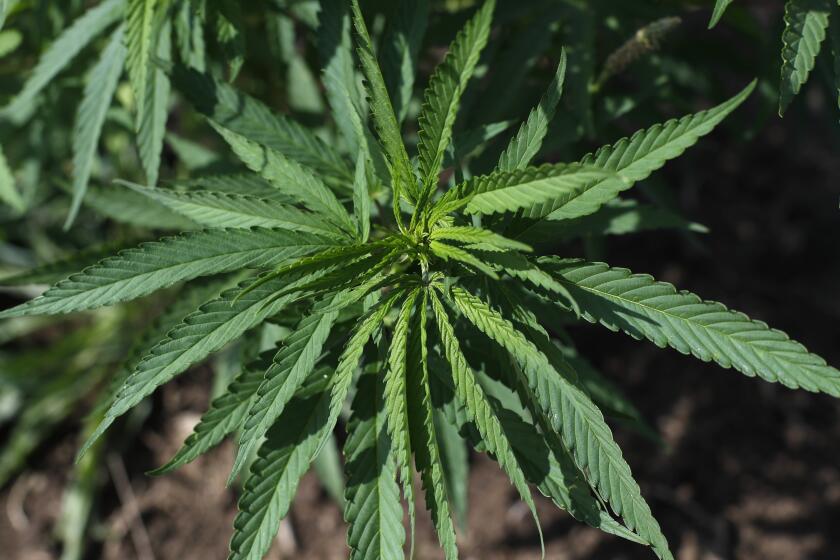Helping Others to Live : Video About Son’s Death Eases Mother’s Grief
Kyle Sickinger was a clean-cut kid who liked to get high once in a while.
Big deal, the 16-year-old’s friends thought. No hard stuff. Some alcohol, maybe an occasional marijuana joint. And more recently, lens dust cleaner in pressurized cans, which produces an instant but brief sensation of dreamy lightheadedness.
But earlier this month, Kyle and friend Jeffrey Vega took a final hit from a can of the cleaner, sank to the bottom of Kyle’s back-yard swimming pool in Chatsworth and drowned.
It might have been just another sad end to two young lives. But in the last month, Kyle’s mother, Sharon Nilson, has used her son’s death as a tool to educate others about the dangers of inhaling the potentially lethal aerosols that police, educators and teen-agers say are a new craze on school campuses around Los Angeles.
“This is positive grieving,” said Nilson, her eyes red-rimmed from crying and sleepless nights. “If we close the door these kids have opened, it’s our mistake. This can’t just be a flash in the pan like so many other incidents.”
So she has turned her house into an informal youth center, where teen-agers come after school to play the piano, fiddle with her computer, listen to the radio or just sit quietly next to the same pool where their friends died May 3.
The youths comfort Nilson--their laughter and chatter fills up the silence. But they also educate her about the drug habits of teen-agers. She never realized that her son was an abuser.
And together, Nilson and the teen-agers are producing a videotape to warn others of the dangers of using what many of them think is a harmless drug.
On the tape, which Nilson wants shown in schools, the teen-agers talk frankly about drug use, especially about inhaling propellants such as those that helped kill their friends. Their comments are intercut with scenes Nilson taped of Kyle’s funeral. She was planning even then to make such a video.
“You know, we’re just saying the straight facts,” said Sam Merchant, a 16-year-old Canoga Park High School sophomore who appears on the tape. “There’s no acting.”
Sam and others on the tape said they hope their straightforward approach will be successful at steering young people away from cleaner-sniffing.
“This is the new craze,” said Sgt. Mike Moran of the Los Angeles Police Department’s DARE, or Drug Abuse Resistance Education, program.
Jamie Birawer, a 16-year-old sophomore at Stoney Point High School in Chatsworth, listed several reasons why teen-agers are turning to the cleaner. “It’s not illegal. It’s easy to get.”
And it’s cheap. Cans of the cleaner cost only a few dollars each, but students often get discounts at photo-supply stores to encourage them to take up photography as a hobby. Merchant said a friend bought 15 cans of the cleaner before a party about four months ago. When his friend flashed his student identification card, Merchant said, the clerk took 15% off his bill.
Photo store owners said they are aware of the abuses by some teen-agers but are in no position to regulate sale of the cleaner. “There’s nothing illegal about it,” said the manager of the Chatsworth store where Kyle and Jeffrey bought their can.
Likewise, school administrators said it is difficult to control use on campuses because it is not always clear that a student with a can of cleaner is not using it for its intended purpose--cleaning dust from camera lenses, electronic gear and other sensitive devices.
Nilson said she thinks teen-agers, parents and teachers should be even more aware of the dangers. “This stuff is deadly, and it can happen to anyone,” she said.
Teen-agers who inhale the cleaner call it “nitrous,” mistakenly believing the cans contain nitrous oxide, a gas frequently used in dental procedures as an anesthetic. The effect it produces is similar to that of nitrous oxide--a light-headed feeling caused by the restriction of oxygen to the brain.
But the cleaner does not contain nitrous oxide. The type used by Kyle and Jeffrey contained chlorodifluouromethane, a propellant that can be lethal if inhaled, according to a warning printed in bold letters on most cans.
“They think it’s cool and sometimes they take too much and they never wake up,” said Lt. Bud Harper, officer in charge of the LAPD’s juvenile narcotics unit. “They are playing Russian roulette with chemical bullets.”
Short of death, the chemical propellants in the cleaners can cause loss of muscle control and permanent brain and organ damage, experts said.
It is difficult to determine whether young people have died directly because they inhaled the cleaner, in part because the gases dissipate quickly in the bloodstream, said manufacturers and medical investigators.
In the case of Kyle and Jeffrey, the official cause of death was drowning.
The boys apparently were floating on inner tubes in the pool, inhaling squirts of gas from the can. They passed out within seconds of each other, slipping to the bottom of the pool, the coroner’s office said.
When news spread among Kyle and Jeffrey’s friends that they had died after inhaling the cleaner, many denied that the gas had anything to do with the tragedy. Others said the two were foolish for using it in the water.
But Claude Boucher, an investigator for the coroner’s office, said it is uncertain whether Kyle and Jeffrey would have survived had they been on land--which made the teen-agers at Nilson’s house stop and think.
“A lot of my friends do it, and nothing happens,” Birawer said. “I didn’t believe it was the drug that killed them. But it was.”
More to Read
Sign up for Essential California
The most important California stories and recommendations in your inbox every morning.
You may occasionally receive promotional content from the Los Angeles Times.










